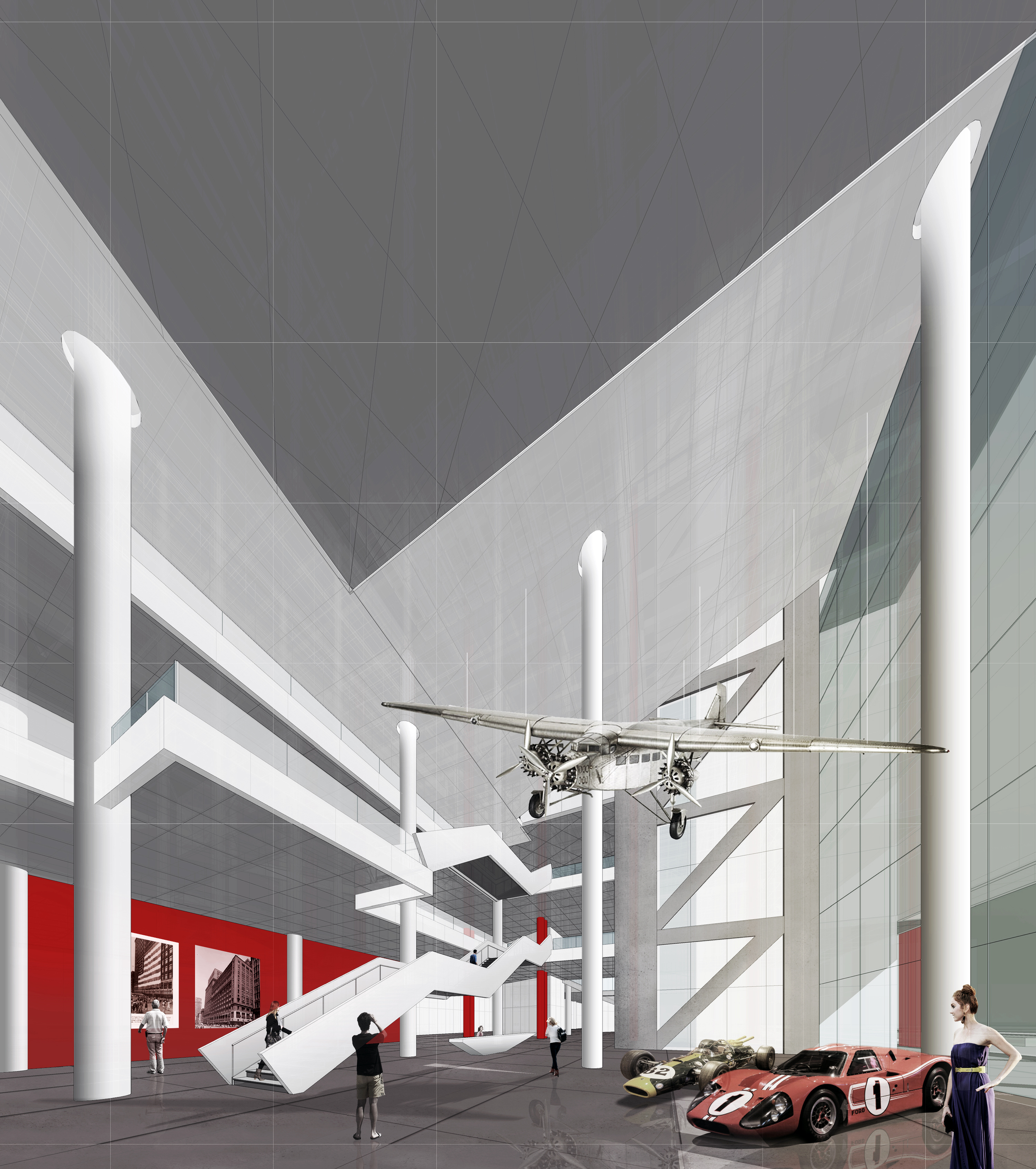FIELD OF STRUCTURAL MEMORIES:
DETROIT CULTURAL CENTER & MEDIA LAB
Competition
Spring 2013
*Honorable Mention Prize
*Exhibited at Redesigning Detroit 2013
The J.L. Hudson’s site is an empty lot that is encompassed by a nostalgic ghost. The memory of the great shopping center, icon, and beacon of American pride has whittled down to the mere bones of the late building: columns, cores, and parking. These memories and bones make this site special, and essentially this is the condition for the greater Detroit urban context. The question then becomes: What can fill this site to the magnitude and pride of what once was? The solution does not beg for a condition that simply maximizes function and square feet. It also cannot be naive of the historical significance and its effect on the urban condition.
This intervention aims to amplify the existing framework of the site:
A Field of Memories (the structural grid)
Building Blocks of the future (programmatic masses)
Upholding the Urban Corridor
On Woodward Ave, upholding the urban corridor from street level was vital to this intervention. The question was, how does one hold the edge without becoming oppressive and overbearing? This is where the column grid became essential to the design. Difference in perspective allows the field of columns to change from a planar condition on approach, to a porous condition at arrival.
The program of this intervention revolves around the essence of receiving and sharing ideas, while providing other basic programmatic needs of the city. The grand stair leads up to the Media Level which holds libraries, public study areas, and conference rooms which push for social interaction. The main auditorium space would be utilized for progressive talks from new start-up companies, architects, and TED talks for the future. Galleries, office use, retail, and restaurants all merge to create a truly mixed-use condition which allows this cultural center to become as dynamic as possible.
Carving the Public Plaza
The new cultural center pushes to uphold Detroit traditions, but in a more permeable condition. The main issue with the old Hudson’s building was that the energy was contained within an enclosed and dense perimeter block condition. The building acted as an icon and a billboard, but it did not give back to the community at ground level.
The solution to this was a simple formal move. By peeling the face back 30 degrees and introducing a grand public stair that carved and invaded the building, this allows the building to open up to pedestrian traffic from the south, while becoming an iconic digital billboard for traffic from the north. The Field of Memories encompass the public stair below and in this instant, the people of Detroit now see the bare essence of what once was. At ground level, windows to the past show exhibits that will hold historic Detroit relics along with rotating exhibitions of new artists and technological advances.
This new public plaza will be the core for concerts, festivals, exhibitions, and parades.









